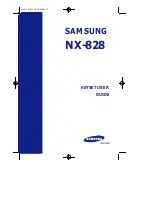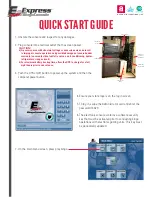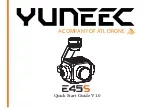
LAKEWOOD INDUSTRIES
the housing brackets on each side. Using a hand
drill with a 1/2” chuck, drill 1/2” holes through the
rear mounting plates then through the factory lower
control arm housing brackets. Spot drill using a
1/4” drill, then change to a 1/4” drill size. Drill through
with the 1/4” drill bit then drill through with a 3/8” drill
bit and last with a 1/2” drill bit. CAUTION: Be very
careful when drilling through that the drill bit does not
grab and whip the drill around out of your hands.
9. Insert short 1/2” bolts, lock washers and nuts then
tighten securely.
10. Grease the four fittings in the bars through the
holes in bottom of bars.
11. If the anti-roll bar is going to be used, it can be
attached to the holes provided in the lift bars.
Place the spacers between the anti-roll bar and lift
bars (if necessary) on each side and use factory
GM bolts and nuts. tighten securely. NOTE: for
drag racing use, we recommend not using the
anti-roll bar.
12. Place car back on the ground and you are ready
to test.
CAUTION: TO USE YOUR LIFT BARS ARMS TO
ADJUST YOUR REAR END PINION ANGLE,
FOLLOW DIRECTIONS BELOW.
1. Remove car from jack stands. now place car upon
blocks or car ramps so that the car weight is on all
(4) wheels, keeping the car level, but making sure
you still have room to work under the car to make
your adjustments.
2. With the car up in the air you will need to check the
pinion angle of the rear end and drive shaft. Read
the attached sheet on setting pinion angle. You will
need to aquire a magnetic protractor (angle finder)
to do this operation.
3. Read this before performing the next operation ! !
Using a magnetic protractor (angle finder) check the
pinion angle. If you can’t obtain the desired 4-6
degree pinion angle, then loosen the 4 lower bolts
and pry between the shock stud and control arm to
adjust angle. Tighten all bolts securely while
checking pinion angle.
4. Do not attempt to drive the car with out securing
the lift bar plate to the axle housing plate welded or
bolted. Center punch and drill starting with 3/16” as
a pilot hole then step up the sizes using 1/4”, 5/16”,
3/8” and finishing with 1/2” for final size. Then
install the 1/2” bolts, lockwashers and nuts and
tighten. (torque to 65 ft lbs.)
5. Remove car from the support stands or car ramps
and place it on the ground. You are now ready to
Rock & Roll!!
PLEASE NOTE
1. Be sure to check the bolts frequently. make sure
they are tight and always stay tight. you can use
thread lock if you wish.
2. Welding is recommendedf (but not required) to
secure the lower plates to the lower axle brackets.
3. These lift bars are legal for use in NHRA stock
eliminator classes as a bolt on application only!
(no welding is allowed).
GM A-BODY
Sway bar holes.
GM G-BODY
2 bolts here if not welding.
Sway bar.
GM G-BODY
2 bolts here if not welding
Sway Bar
Sway Bar spacer bushings






















